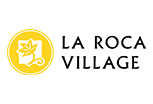The Romans made good use of the Catalan landscapes for the culture of vines. Over the years, the vines have lived through wars, pillages and the terrible phylloxera, that severely affected the Catalan agricultural economy. But the tenacity of farmers, and their good-will and traditions, help the vines to continue being an inherent element of the landscape of the land. In Catalonia, wine is produced under twelve wine and one cava designations of origin (DO). Sparkling wine, labelled under the D.O. Cava, is produced following the old champenoise process and the epicentre of its production is Sant Sadurní d’Anoia, where around eighty wineries produce more than 90% of Spain’s cava. The town has a Cava Interpretation Centre and a patron saint festival dedicated to the phylloxera. Part of the DO Cava shares territory with the DO Penedès, which is the one with the largest number of farmable acres. In its capital, Vilafranca del Penedès, we can visit the Vinseum wine museum, located right in front of the basilica of Santa María. There are two other designations of origin in the province of Barcelona: on the foothills of Montserrat lies the DO Pla de Bages, where wines are made with the autochthonous variety picapoll, and in the DO Alella, a step away from Barcelona, where in addition to cava, excellent white wines of the pansa blanca variety are made. In Teià you can visit the Roman winery of Vallmora. In the province of Girona, the tramuntana wind infuses character to the wines of the DO Empordà, whose vineyards rest on the gentle hills of the Costa Brava. Throughout the town of Empúries, ancient Greeks introduced viticulture to the coastal territory. A tradition that was later followed, in the Middle Ages, by the monks of the Sant Pere de Rodes monastery. In the Lleida counties, wine is named after the river that flows through their lands, DO Costers del Segre. The altitude of its vineyard fields, located between 200 and 400 meters high, gives personality to some white wines made with the Macabeu and Parellada varieties. In this area, you can follow the Lleida Wine Route. Tarragona is the province with the most designations of origin. The DO Tarragona is a legacy from the ancient Roman Tarraco that today is a World Heritage Site; in DO Conca de Barberà, with its vineyards resting on a plain protected by the mountain range of Prades, the native vine variety trepat predominates. The DO Montsant and the DOQ Priorat divide the rugged and mountainous territory of the interior of the province. Many of its producers are small families that have spent several generations to this heroic viticulture, but there are also young winemakers with new and successful suggestions. In the Falset cooperative, they organize dramatized visits that tell the history of winemaking and the cooperative movement in this land. In the territory of DO Terra Alta, between the Ebre river and Aragon, we can visit two of the most impressive ‘Wine Cathedrals’, the ones in Pinell de Brai and in Gandesa. The DO Catalunya covers the vineyards of most of the wine-producing municipalities. All these designations of origin present a wide wine tourism offer, with tastings in the wineries, picnics, bike rides through the vineyards, themed hotels and spas with specialized wine treatments, among other interesting proposals.

















